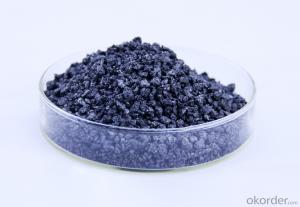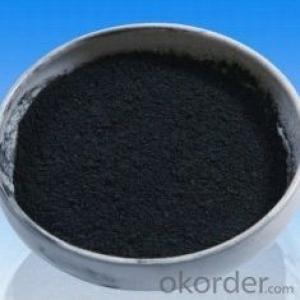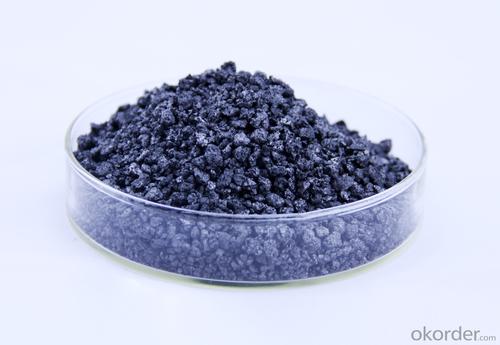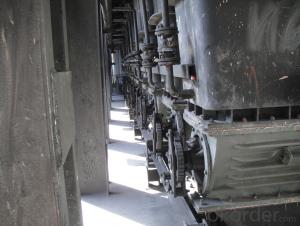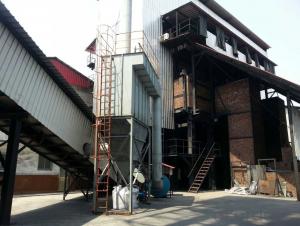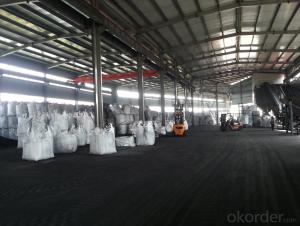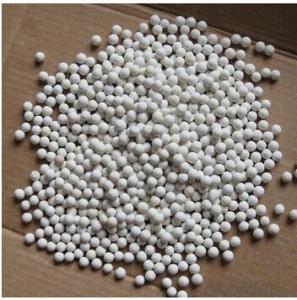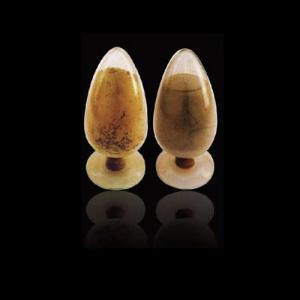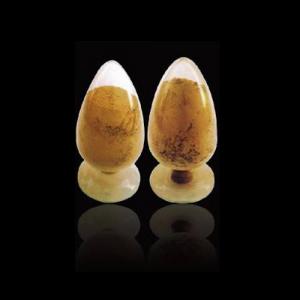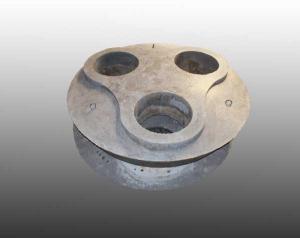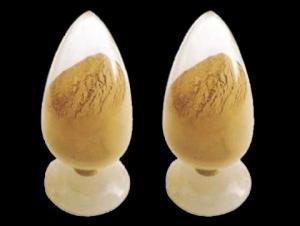Monolithic Refractories for Iron and Steel Industry:Calcined Petroleum Coke as Carbon Raiser
- Loading Port:
- Shekou
- Payment Terms:
- TT OR LC
- Min Order Qty:
- 20 m.t
- Supply Capability:
- 1000 m.t/month
OKorder Service Pledge
OKorder Financial Service
You Might Also Like
Factory Background
The factory is majorly running and operating carbon additive (pitch coke, calcined petroleum coke and anthracite), low nitrogen carbon additive, and brake pad making material. Company is the long term supplier of Sinosteel Corporation, Shanghai Carbon Corporation, the plant of SGL Group the Carbon Company in China and some largest special carbon products producing plants.
YUAI also supplies huge amout of high quality carbon additive and graphite carbon additive to steel plants, foundries and ferrotungsten plants. YUAI has been assigned by BAO STEEL as the only organization for processing pitch coke for export purpose. The group’s major products are constantly exported to Japan, Korea, Malaysia, South East Asia countries, Europe and America, which receive praises by our consumers.
The group has invested numbers of calcinators in Anhui China to ensure the capability of producing and processing huge amount of carbon additive. Further investment is on process. According to the orders from customers, YUAI is able to processing and providing different specifications of carbon additive and other products. To provide best quality of products and to offer customers most satisfied service is YUAI’s operating objectives.
Calcined Petroleum Coke
FC:98.5%min,
S:0.5%max
A:0.8%max
V:0.7%max
Mositure:0.5%max
Size:1-5mm
This product is mainly used in steel-making and foundry. Calcined Petroleum Coke
Calcined Petroleum Coke comes from delayed coke which extracted from oil refinery. Although Calcined Petroleum Coke contains a little bit higher level of sulfur and nitrogen than pitch coke, the price advantage still makes it widely used during steel-making and founding as a kind of carbon additive/carburant.
Technology:
Laborary Equpment
In our lab,we has a high precision balance,mullfe furnace,sample making machine, dring box,sulfur measurement instrument and other calibratiing equipments.As a result,before deliverung to our customers,our products have to pass a strict test to ensure the quality and components.The testing reports will be sent to our customers to confirm untill they satisfy with it.
Packaging & Delivery
Packaging Detail:25kg paper bag into 1t weaving bag 5kg, 10kg and 20kg weaving bag into 1t weaving bag 25kg weaving bag put on pallet covered with entanglement wrap product direct into packing bag 25kg paper bag put on pallet covered with entanglement Wrap 25kg weaving bag into 1t weaving bag.
Delivery Details: 7 days
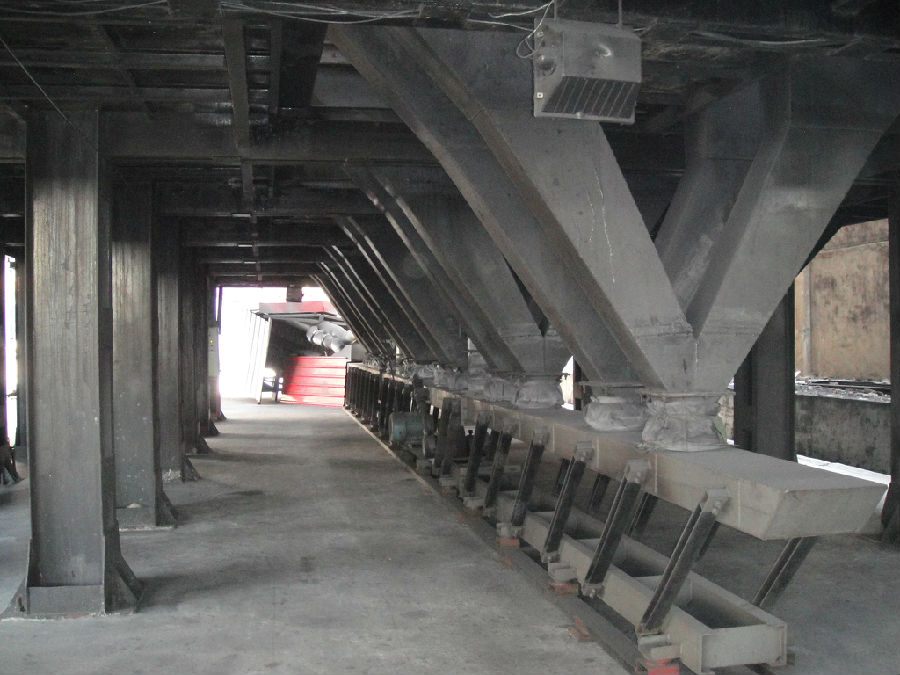
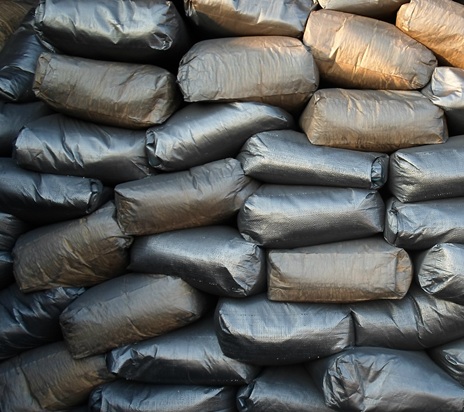
- Q: What are the common manufacturing processes used for monolithic refractories?
- Monolithic refractories are commonly manufactured using the following processes: 1. Mixing: The initial step involves accurately measuring and combining the raw materials to create a uniform mixture. 2. Wetting: The mixture is then moistened with water or a liquid binder to enhance its workability and plasticity, facilitating shaping and molding. 3. Forming: Various techniques such as casting, gunning, ramming, or extrusion are employed to shape the wet mixture. Casting entails pouring it into a mold, gunning involves spraying it onto a surface, ramming compacts it using a tool, and extrusion forces it through a die to create specific shapes. 4. Drying: The formed monolithic refractory is dried in a controlled environment with specific temperature and humidity conditions to eliminate excess moisture, preventing cracks or warping. 5. Firing: The dried monolithic refractory is then subjected to high temperatures to achieve the desired properties. This process, known as sintering, promotes particle bonding, increasing the material's strength and stability. 6. Finishing: Following the firing process, additional finishing processes like grinding, polishing, or coating may be employed to enhance the surface quality and overall performance of the monolithic refractory. By employing these standard manufacturing procedures, high-quality monolithic refractories with consistent properties and performance characteristics are produced.
- Q: How do monolithic refractories improve the efficiency of reheating furnaces in steel plants?
- Monolithic refractories play a crucial role in improving the efficiency of reheating furnaces in steel plants. These refractories are specially designed to withstand high temperatures and harsh operating conditions, making them ideal for use in steel plants. One of the key ways in which monolithic refractories enhance furnace efficiency is by reducing heat loss. These refractories have excellent insulation properties, which help to minimize heat transfer from the furnace to its surroundings. As a result, less energy is wasted, and the furnace can maintain its desired temperature more efficiently. Additionally, monolithic refractories contribute to a more uniform and controlled heat distribution within the furnace. They can be easily shaped and installed to create a seamless lining, ensuring that heat is evenly distributed throughout the furnace chamber. This uniform heat distribution prevents hotspots and cold spots, leading to a more efficient heating process. Monolithic refractories also play a crucial role in minimizing downtime and maintenance requirements. Unlike traditional brick linings, which are prone to cracking and erosion, monolithic refractories offer superior resistance to wear and tear. This enhanced durability reduces the need for frequent repairs and replacements, allowing for uninterrupted furnace operation and increased overall efficiency. Furthermore, monolithic refractories contribute to improved energy efficiency by reducing fuel consumption. The superior insulation properties of these refractories help to retain heat within the furnace, reducing the amount of energy required to maintain the desired temperature. This leads to significant energy savings for steel plants, as less fuel is needed to achieve the same heating results. In conclusion, monolithic refractories significantly improve the efficiency of reheating furnaces in steel plants by reducing heat loss, ensuring uniform heat distribution, minimizing downtime and maintenance, and reducing fuel consumption. By incorporating these refractories into their furnace linings, steel plants can enhance their productivity, reduce energy costs, and improve the overall efficiency of their operations.
- Q: How are monolithic refractories used in the iron and steel industry?
- Due to their exceptional performance and versatility, monolithic refractories are widely utilized in various applications within the iron and steel industry. Composed of a uniform material, these refractories serve as seamless linings in high-temperature environments. In the iron and steel industry, the significance of monolithic refractories cannot be overstated as they play a crucial role in multiple stages of the manufacturing process. A primary application is seen in the blast furnace, where the inside of the furnace is lined with monolithic refractories. This lining is exposed to exceedingly high temperatures and harsh chemical reactions. By providing excellent thermal insulation and resistance to chemical attack, monolithic refractories ensure the durability and longevity of the blast furnace. Another crucial application is witnessed in the steelmaking process, where monolithic refractories are used to line the ladles and tundish, utilized for transporting and pouring molten steel. These refractories are specially designed to withstand the corrosive nature and high temperatures of the molten steel, thus preventing contamination and guaranteeing the quality of the final product. Furthermore, monolithic refractories find application in various ancillary equipment and structures within the iron and steel industry. They are employed in furnaces, kilns, and other heat treatment systems to provide insulation and maintain high-temperature conditions. Additionally, they are used in the construction of chimneys, exhaust ducts, and other exhaust systems, where they offer thermal insulation and resistance against corrosive gases. Overall, the vital role played by monolithic refractories in the iron and steel industry lies in their ability to provide high-temperature insulation, chemical resistance, and durability. They optimize the production process, enhance energy efficiency, and ensure the quality of the final product. With their exceptional performance and versatility, monolithic refractories have become an indispensable component within the iron and steel manufacturing industry.
- Q: How do monolithic refractories withstand the mechanical impacts in furnace door applications?
- Monolithic refractories are designed to withstand mechanical impacts in furnace door applications due to their unique properties and composition. These refractories are made from a single piece of material, which eliminates the need for joints or seams that are prone to cracking or failure under mechanical stress. One important characteristic of monolithic refractories is their high density, which provides them with excellent strength and resistance to mechanical impacts. Their dense structure makes them less susceptible to cracking or breaking when subjected to sudden or repeated impacts, such as when a furnace door is opened or closed. In addition to their density, monolithic refractories also possess high tensile strength and toughness. These properties allow them to absorb and distribute the energy from mechanical impacts, reducing the risk of damage or failure. This is particularly important in furnace door applications, where the refractories are constantly exposed to the stress of opening and closing the door. Furthermore, monolithic refractories often contain additives or bonding agents that enhance their mechanical properties. These additives can include fibers or aggregates that reinforce the structure and improve resistance to impacts. They can also improve the refractory's ability to withstand thermal cycling, which is common in furnace door applications. Overall, monolithic refractories are specifically engineered to withstand the mechanical impacts encountered in furnace door applications. Their dense, high-strength composition, combined with the use of additives and bonding agents, ensures their durability and longevity in these demanding environments.
- Q: What are the common testing methods used to evaluate the performance of monolithic refractories?
- The common testing methods used to evaluate the performance of monolithic refractories include thermal conductivity testing, hot modulus of rupture testing, abrasion resistance testing, thermal shock resistance testing, and corrosion resistance testing.
- Q: What are the limitations of monolithic refractories in high-temperature applications?
- Monolithic refractories are renowned for their versatility and ease of installation, which has made them a popular choice in various high-temperature settings. However, it is important to take into account their specific limitations. To begin with, monolithic refractories have a restricted ability to withstand thermal shock. Significant temperature changes, such as those encountered during start-up or shutdown procedures, can subject them to thermal stress, resulting in cracking or spalling. This can be a significant issue in scenarios where the refractory is exposed to frequent temperature fluctuations. Moreover, monolithic refractories possess comparatively lower mechanical strength in comparison to traditional brick or block refractories. This can lead to a diminished ability to withstand mechanical stress, including abrasion or impact, particularly in high-temperature environments. Consequently, they may not be suitable for applications that involve high mechanical loading or abrasive conditions. Another drawback of monolithic refractories is their vulnerability to chemical attack. Certain aggressive chemical environments can trigger chemical reactions with the refractory material, leading to deterioration or corrosion. This becomes a concern in applications that involve acidic or alkaline substances, where specialized refractory materials may be necessary. Additionally, monolithic refractories are more susceptible to spalling or erosion caused by thermal cycling. The repetitive expansion and contraction of the refractory material due to temperature changes can result in the formation of cracks or gaps, making them more prone to erosion from gases or liquids. This limitation must be carefully considered in applications where long-term durability is crucial. Lastly, repairing or replacing monolithic refractories can be challenging compared to brick or block refractories. Once installed, removing and replacing a monolithic lining can prove difficult, especially in complex shapes or confined spaces. This limitation can lead to prolonged downtime or increased maintenance and repair costs. In conclusion, while monolithic refractories offer numerous advantages in high-temperature applications, they also come with limitations in terms of thermal shock resistance, mechanical strength, chemical resistance, erosion, and repairability. It is crucial to thoroughly assess these limitations to ensure the suitability of monolithic refractories for specific application requirements.
- Q: How do monolithic refractories contribute to the safety of iron and steel plants?
- Monolithic refractories play a crucial role in enhancing the safety of iron and steel plants. These refractories are designed to withstand extreme temperatures, thermal shocks, and chemical reactions, making them highly resistant to the harsh conditions within the plants. By providing a strong and durable lining for furnaces, ladles, and other equipment, monolithic refractories prevent leaks, cracks, and failures that could lead to accidents, such as molten metal spills or explosions. Their ability to effectively contain heat and protect against wear and tear ensures the structural integrity of the plants, minimizing the risk of equipment failure and potential hazards.
- Q: What are the typical applications of monolithic refractories in blast furnaces?
- Monolithic refractories are commonly used in blast furnaces for various applications, including lining the hearth, taphole, and slag line, as well as repairing cracks and erosion in the furnace lining. They are also used to create a protective barrier against high temperatures, chemical reactions, and mechanical stresses inside the blast furnace.
- Q: How do monolithic refractories improve the efficiency of ladle and tundish drying furnaces?
- The efficiency of ladle and tundish drying furnaces is enhanced by monolithic refractories in multiple ways. To begin with, monolithic refractories provide a high level of thermal insulation. These refractories possess low thermal conductivity, effectively minimizing heat transfer from the furnace to the surrounding environment. This insulation property helps to reduce heat losses and maintain a higher temperature within the furnace for a longer duration. Consequently, the drying process becomes more efficient as the heat is retained within the furnace, resulting in a decrease in overall energy consumption. Furthermore, monolithic refractories exhibit exceptional resistance to thermal shock. The rapid temperature fluctuations that occur during the heating and cooling cycles of the furnace can cause stress and cracks in the refractory material. However, monolithic refractories are designed to withstand these thermal shocks and maintain their structural integrity. This durability ensures a longer lifespan for the refractory lining, reducing the need for frequent repairs or replacements. Consequently, the furnace operates at optimal efficiency without the downtime associated with maintenance. In addition, monolithic refractories offer excellent mechanical strength and abrasion resistance. These properties are crucial in ladle and tundish drying furnaces, which are subjected to mechanical stresses and abrasive substances like molten metal and slag. The use of monolithic refractories ensures that the lining can endure these harsh conditions without suffering structural damage. This resistance to wear and tear increases the overall efficiency of the furnace, enabling it to operate uninterrupted for longer periods. Lastly, monolithic refractories provide greater design flexibility compared to traditional brick or tile refractories. They can be easily cast or gunned onto the lining surface, simplifying installation and repair processes. This flexibility allows the furnace to be customized and adapted to meet specific requirements, ensuring optimal heat distribution and efficient drying processes. In conclusion, monolithic refractories enhance the efficiency of ladle and tundish drying furnaces through their thermal insulation, resistance to thermal shock, mechanical strength, and design flexibility. By reducing heat losses, increasing durability, withstanding harsh conditions, and facilitating easy installation and repair, these refractories optimize the performance and energy efficiency of the furnaces.
- Q: What are the considerations for selecting monolithic refractories for reheating furnaces?
- There are several key considerations when selecting monolithic refractories for reheating furnaces. Firstly, the refractory material must have excellent thermal conductivity to efficiently transfer heat to the steel being reheated. Additionally, it should possess high resistance to thermal shock and mechanical stress to withstand the rapid temperature changes and mechanical forces experienced in the furnace. The refractory should also have low porosity to prevent the penetration of gases and slag, ensuring a longer service life. Other factors to consider include the refractory's resistance to corrosive environments, ease of installation, and cost-effectiveness. Ultimately, choosing the right monolithic refractory is crucial to ensure optimal furnace performance and longevity.
Send your message to us
Monolithic Refractories for Iron and Steel Industry:Calcined Petroleum Coke as Carbon Raiser
- Loading Port:
- Shekou
- Payment Terms:
- TT OR LC
- Min Order Qty:
- 20 m.t
- Supply Capability:
- 1000 m.t/month
OKorder Service Pledge
OKorder Financial Service
Similar products
Hot products
Hot Searches
Related keywords
